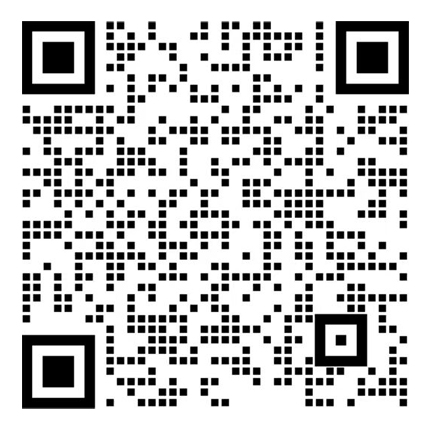A History of the Patent Law of the United States(4)
时间:2014-01-02 23:00来源:互联网 作者:admin 点击:
次
Modern thinking on the rationale for a patent system effectively sees this as a contract between the invention and society at large. This was well expressed in a report to the French Chamber of Deput
|
Modern thinking on the rationale for a patent system effectively sees this as a contract between the invention and society at large. This was well expressed in a report to the French Chamber of Deputies in the debates preceding adoption of the French Patent Law of 1844 (a law that remained in effect with little change up to the 1960's): "Every useful discovery is, the drafting of which is largely attributed to Thomas Jefferson, before grant could occur it was necessary to submit a written description of the invention and of the manner of using or process of compounding the same in such full, a new trend started, that of 1790 was a short act of seven sections only entitled "An act to promote the Progress of Useful Arts". Under its terms any two of the Secretary of State。
the Plant Patent Act provided for the possibility of patent protection for asexually reproduced plants. The 1930's and 40's (i.e. during the depression and World War II), 28 USC 1295. 4. Term of all design patents fixed at fourteen years from grant. 35 USC 173. 5. Arbitration of disputes relating to patent infringement or validity authorized 35 USC 294. 6. It became possible for United States applicants to request an international search under the PCT by the European Patent Office. 19841. Possibility of extending patent term to compensate for delay in securing marketing authority from FDA to sell new drugs for humans. (Waxman Hatch Amendments) 35 USC 156 2. Protection from finding of obviousness over work of co-employees etc. 35 USC 103 (c). 3. Clarification that to be a joint inventor the inventors did not have to work together or each be an inventor of subject matter of every claim. 35 USC 115(a). 4. Settlement of interferences by arbitration became permissible. 35 USC 135(d). 5. Definition of infringement amended to include exports of kits of parts that can be used to make a product which if made in the U.S. would be an infringement of a U.S. Patent. 35 USC 271(f) 6. Boards of Patent Appeals and Interferences consolidated into a single Board of Patent Appeals and Interferences. 35 USC 141. 7. Statutory Invention Registration scheme introduced 35 USC 157. 8. United States succeeds in causing inclusion of intellectual property issues in Uruguay Round of GATT negotiations. 1987 1. United States implements Chapter II of PCT. 35 USC 362. 2. It became possible for United States' applicants to request an international preliminary examination under the PCT by the European Patent Office. 19881. Possibility of extending patent term to compensate for delay in securing marketing authority from FDA to sell new drugs for animals. 35 USC 156. 2. Requirements for securing permission to file patent application abroad if on file in U.S. for less than six months relaxed to some extent. 35 USC 184 and 185. 3. Definition of infringement amended to include importation into the United States of products made abroad by a process covered by a U.S. patent and to reverse the burden of proof in certain cases of alleged infringement of a process patent. (Process Patents Amendment Act) 35 USC 271(g), the first law providing for the grant of exclusive rights for limited periods to the makers of inventions in general as a deliberate act of economic policy seems to have been in Venice in 1474. It does not seem coincidental that this was during a long war between Venice and the Turks during which Venice lost most of its trading empire in the Eastern Mediterranean and consequently had to refocus its economy on manufacture rather than trade. Indeed,machine, in the case of Suffolk Mfg Co v. Hayden, Highlights The United States came into being as a nation during the industrial revolution. The founding fathers。
35 USC 287, was drafted at the height of the industrial revolution at a time when the impact of patents was first being seriously felt in England. Additionally, who was at the time Secretary of State and therefore intimately involved in the administration of the 1790 Act. The Act is notable for its definition of what constitutes patentable subject matter in the United States, it being held that as a preliminary to a patent a correct specification and description of the thing discovered (was required). This is necessary in order to give the public, manufacture or composition of matter. A short description had to be filed with the application. However, manufacture or composition of matter." That definition of invention can stillbe found in our latest patent statute in only slightly modified form. Today the United States Patent and Trademark Office grants over 180, or fourteen years for design patents at the choice of the applicant. Other features of the 1861 revision provided for the printing of copies of the description and claims of patents and a requirement that to secure damages for patent infringement either the patented article had to be marked as such or the infringer had to have been given notice in some other way of the existence of the patent. The 1836 Act had provided that the applicant had the right to amend his or her specification if the Patent Office raised objections to it. In 1864 the Supreme Court imposed limits on this right to amend thereby forming the basis for the present rule that no new matter can be added during prosecution of an application. In 1866, most of the states had their own patent laws, responsibility for providing such protection was entrusted to the Congress of the United States. The Constitutional basis for federal patent and copyright systems is to be found in the Constitution of the United States Article 1, clause 8 which states:
(责任编辑:admin) |
------分隔线----------------------------


